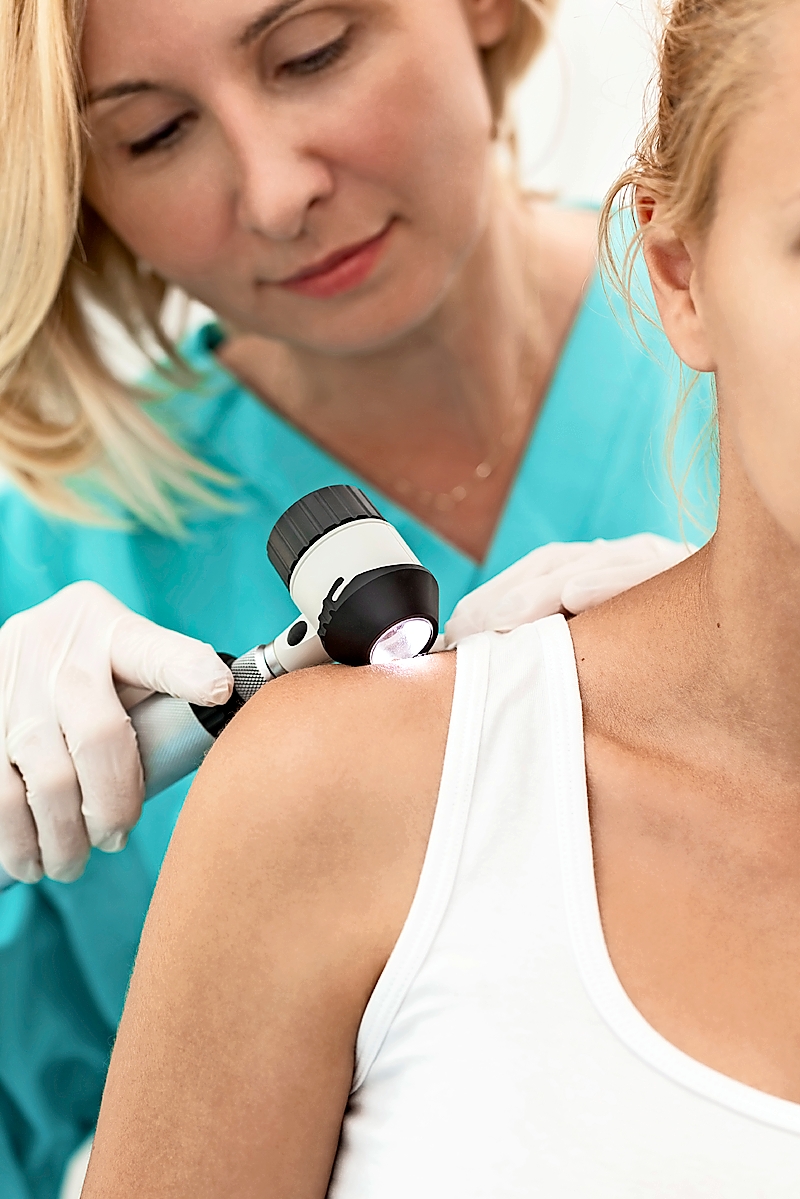Melanoma Mistakes—How to Treat it, How to Avoid it
By Mary Kay Kleist
May 2016 View more Health & Fitness
 With the start of the warm season upon us, many of us will head outdoors to soak up the sun. But before you and the kids venture outside, there’s a new warning from experts about the dangers of melanoma. If you avoid these common melanoma mistakes, it could save your life.
With the start of the warm season upon us, many of us will head outdoors to soak up the sun. But before you and the kids venture outside, there’s a new warning from experts about the dangers of melanoma. If you avoid these common melanoma mistakes, it could save your life.
Melanoma is a deadly skin cancer. More than 10,000 deaths every year in the United States are due to melanoma. And every year in our country, about 135,000 new cases are diagnosed. Experts say the number one mistake people make is thinking it won’t happen to them.
The Risks
Ever recall getting sunburned as a child? Five sunburns, especially in childhood, double the lifetime risk for melanoma. UV light that transmits through clouds, light clothing, and some windows, can damage skin after only 15 minutes. So don’t make the mistake of believing you only need sun protection if you’re outside in the hot, direct sun for several hours. Some people think they’re safe if they apply a small amount of sun lotion, but sunscreen must be re-applied every two hours, even more frequently if you’re sweating or swimming. Before you put on your swimsuit, use about one shot glass worth of SPF 30 or higher sunscreen at least a half hour before you go out in the sun so it has the chance to soak in thoroughly.
Areas of Most Concern
Think about the places on your body that are difficult for you to see every day. According to the Melanoma Research Foundation, melanoma can affect the mouth, scalp, nails, feet, and even your eyes. New moles can show up in hard to see places, like your back and on the back of your neck. “Regular skin screening monthly self-exams, yearly dermatology exams, early detection, and treatment are the most important factors in overall survival,” said Dr. Iris Seitz, Edward Plastic and Reconstructive Surgery, Edward Cancer Center.
Treatment
But what if you are diagnosed with melanoma? “Usually your dermatologist or primary care physician, will biopsy a suspicious lesion. If it reveals melanoma, you will be referred to a specialist, such as a surgical oncologist or plastic surgeon,” said Dr. Seitz. “Then the melanoma will be removed with a security margin based on the thickness of the melanoma. If the melanoma has a thickness of one millimeter or more, a biopsy will also be performed to assure the cancer has not spread,” added Dr. Seitz. “If the sentinel lymph node shows melanoma cells, removal of the lymph nodes in that area is recommended to improve survival,” said Dr. Seitz.
For early-stage melanoma that is only located where it started, the five-year survival rate is 98 percent, according to Dr. Seitz. The survival rate for melanoma that has spread to the nearby lymph nodes is 63 percent. If it has spread to other parts of the body, the survival rate drops to 17 percent. However, survival rates vary depending on a number of other factors. “Melanoma survivors will undergo close follow-up with their physician, as the risk of developing a second melanoma is increased. Continued yearly skin exams and increased protective measures when outside are advised,” said Dr. Seitz.
How to Avoid Melanoma:
• Seek shade
• Avoid sun exposure between 10 a.m.-4 p.m.
• Do not burn
• “Slop-slip-slap” is a way to remember the three main components to avoid UV exposure: Slop on broad-spectrum (UVA/UVB, >30 SPF, waterproof, one ounce, 30 minutes before going outside, re-apply every two hours; Slip on a shirt or clothes (non-see through/UV-proof preferred); Slap on a hat and sunglasses.


